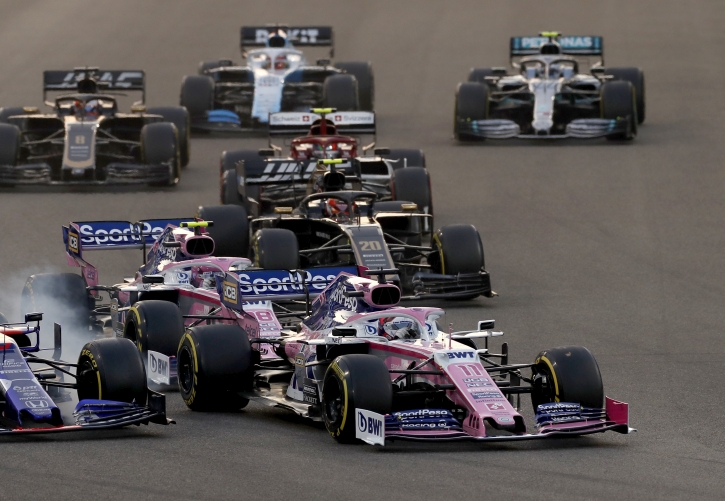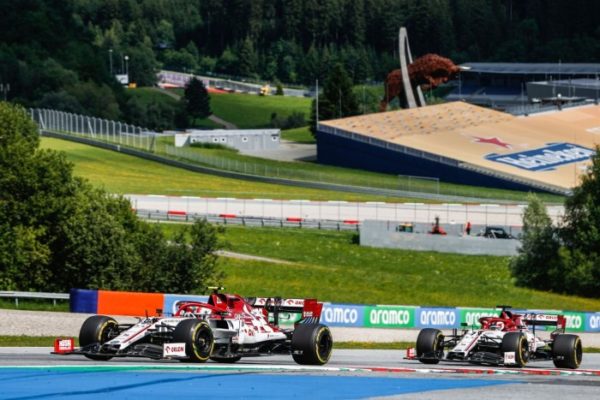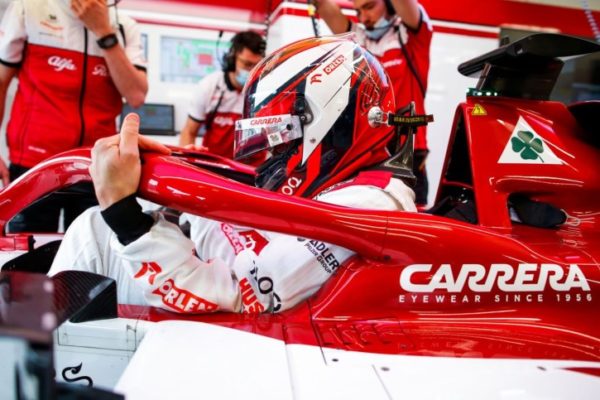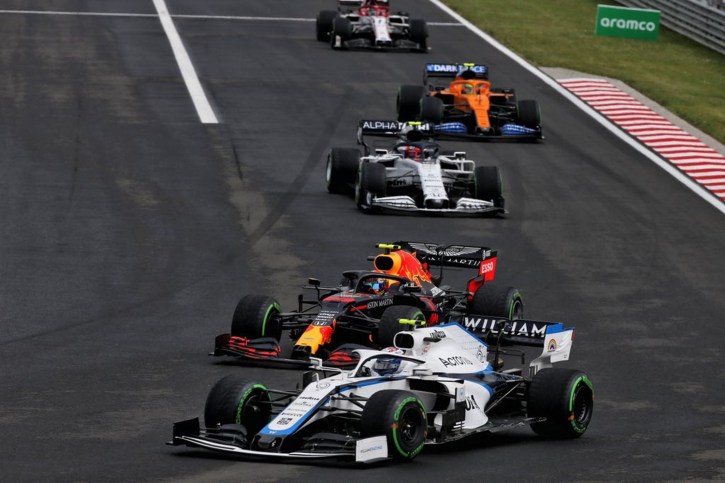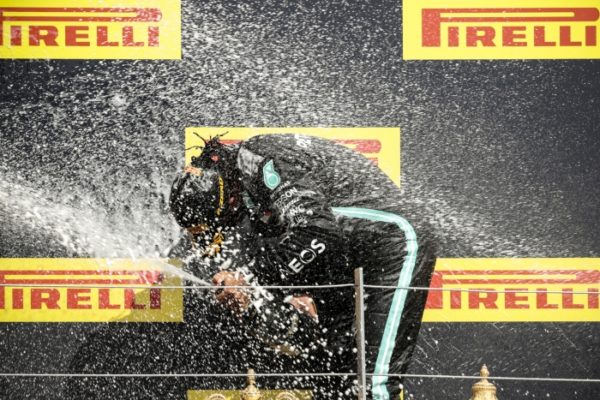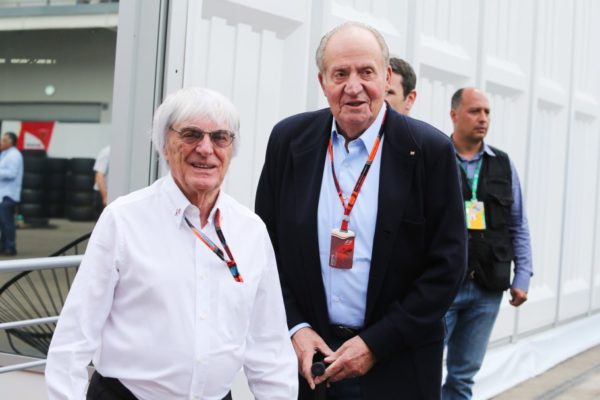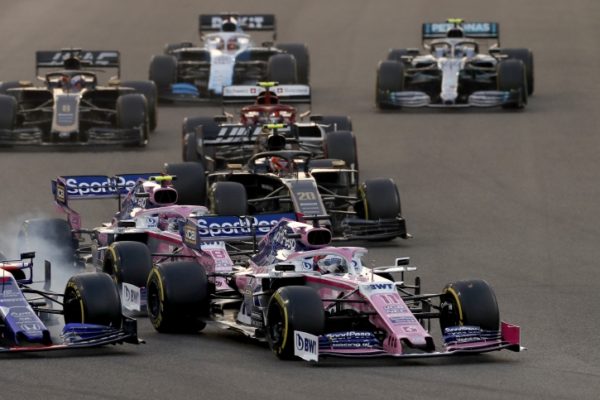Shortly after nine o’clock today, Tuesday, the new BMW Sauber F1.07 entered the spotlight for the first time. The BMW Sauber F1 Team with its drivers Nick Heidfeld (29, Germany) and Robert Kubica (22, Poland), along with test and reserve driver Sebastian Vettel (19, Germany) and test driver number two, Timo Glock (24, Germany), lined up before the world public in the Feria de Valencia.
After a good Formula One debut year, the BMW Sauber F1 Team is ready to take its next step in 2007. This coming season will see the newly established team pursue the successful development agenda it has embarked on. The target is clear: securing more podium places in 2007. At the same time, staff expansion at Hinwil will be completed, with the workforce there growing up to 430. 125 have already been hired, with another 30 to follow. By the end of the year, the new building complex in Hinwil will also have been completed. Then the BMW Sauber F1 Team, which also has 300 staff working in Munich, will have reached its full complement.
“In 2006 we exceeded our own targets. Now expectations are rising faster than the team can develop. That’s the punishment for excelling yourself,” notes BMW Motorsport Director Mario Theissen before spelling out the team strategy: “2007 marks the second and final year of our development phase. Our aim is to make it onto the podium on our own merit. If the leading teams show any sign of weakness, we want to be ready to breach the gap. Victories on our own merit are not yet a realistic prospect for 2007. We are aiming for that in 2008. In 2009 we want to be in contention for the World Championship title.”
The squad of drivers is a sparkling cocktail of experienced and fresh blood. Theissen says: “We are very satisfied with our line-up. Nick is our experienced man. He is fast and reliable, and has the know-how to take the team forward. All that makes him a firm fixture and an important reference point for the technicians and the other drivers. Robert has already proved how fast he is, and he will catch up on the experience front. The two of them work well together and engage in healthy competition out on the track. As for Sebastian, we will be giving him the opportunity to drive on Fridays as well. He will learn from the other two. We will be further supported by Timo, who is not only fast but has also built up a great deal of experience already.”
Heidfeld, who picked up the most points for the team in 2006, says: “After our good maiden season we now have to continue along our set path. But one can’t expect too much, because the higher you go, the more rarefied the atmosphere. In our first year we collected 36 points and came fifth in the world championship. But the fourth-placed team had 86 points. That’s worlds apart.”
“I learnt a lot in 2006,” says Kubica, “and I want to put it into practice in 2007 and learn more. To stand on the podium for the first time after a Formula One race was an incredible experience. I want more of it.”
Vettel outlines his task: “The better I get to know the car and the team, the more I can support them through my test work. I will make every effort to do as much groundwork as possible for Nick and Robert.”
Glock emphasises: “Driving a Formula One race car is the ultimate goal for a racing driver. The two tests at the end of 2006 were tremendous fun. Now I’m looking forward to the F1.07.”
The F1.07 is the first genuine BMW Sauber. Whereas for last year’s car numerous components had already been designed when BMW resolved to buy the majority shareholding in Sauber in June 2005, the F1.07 was a co- production from its inception. Those responsible for the chassis in Hinwil and their colleagues in Munich handling the powertrain (i.e. the engine and transmission) and the electronics, jointly laid down priorities and created a harmonious overall package.
Work on the concept for the F1.07 began in April 2006. “On the one hand we channelled our experience from the F1.06 into the car, but at the same time we considered the new challenges presented by the 2007 regulations,” explains Willy Rampf, Technical Director of the BMW Sauber F1 Team.
The most important change here is undoubtedly the switch to standard tyres supplied by Bridgestone which, in keeping with the FIA stipulations, must provide less grip so as to reduce cornering speeds. “It is obvious that the cars are going to slide around more, and so it was important for us to build a car that is easy to drive and that our drivers can trust sufficiently to go on the attack,” explains Rampf. “We should also expect the cars generally to run with slightly more downforce in order to compensate for the loss of grip.”
With the introduction of standard tyres, the significance of aerodynamics increases even more. “If you look at all the components that affect the performance of a Formula One car, aerodynamics represent by far the single most important factor,” Rampf is at pains to point out. That is why the expansion of the aerodynamics division was given top priority. Operation of the wind tunnel in Hinwil was gradually ramped up from one to two and then, at the end of October 2006, three shifts. That has long been standard among the competition and was a key prerequisite for achieving the team’s ambitious targets.
Beyond efficient aerodynamics, this time round it is almost equally important to develop a car that responds as well as possible in corners. The front wing has a major role to play here as it definitively dictates the flow of air around the front tyres. Hence it is an all-new development which forms a harmonious coupling with the likewise totally new vehicle nose, which is now shorter and sits higher. This naturally brings a reduction in its weight, but it places extra demands on the engineers in terms of passing the FIA crash tests. However, the most important aspect is that the wing channels a large amount of air under the car, allowing the underbody and diffusor to work to full potential.
The cooling intakes are somewhat larger than those in the predecessor model. They are part of the new cooling concept, which is more effectively integrated into the car’s overall package and designed for a greater throughput of air. The air is smoothly diverted upwards, improving aerodynamic efficiency by comparison with the F1.06 particularly in high outside air temperatures. As Rampf points out: “In the concept phase we devoted a lot of time to finding an optimal solution in this area. It’s an important factor as the air temperature in the first races of the season in particular are traditionally very high. The cooling concept of the F1.07 promises to deliver very high efficiency in all conditions.”
In developing the rear of the car, the designers built on the knowledge gained with the F1.06, giving the tail an even slimmer and lower profile to further optimise air flow around the rear wing. This design was based on the compact quick shift gearbox as well as cleverly positioned hydraulic elements. Also harmoniously integrated into the design are the exhaust pipes, whose form was determined by considerations of performance and overall package. The section underneath the rear wing is completely new. Stricter regulations on rear-end collisions have resulted in the rear crash element being larger and displaying a modifed form. Its lower positioning has required a completely new design for the centre section of the diffusor.
Shorter, raised nose. Beyond efficient aerodynamics, this time round it is almost equally important to develop a car that responds as well as possible in corners. The front wing has a major role to play here as it definitively dictates the flow of air around the front tyres. Hence it is an all-new development which forms a harmonious coupling with the likewise totally new vehicle nose, which is now shorter and sits higher. This naturally brings a reduction in its weight, but it places extra demands on the engineers in terms of passing the FIA crash tests. However, the most important aspect is that the wing channels a large amount of air under the car, allowing the underbody and diffusor to work to full potential. Larger cooling intakes. The cooling intakes are somewhat larger than those in the predecessor model. They are part of the new cooling concept, which is more effectively integrated into the car’s overall package and designed for a greater throughput of air. The air is smoothly diverted upwards, improving aerodynamic efficiency by comparison with the F1.06 particularly in high outside air temperatures. As Rampf points out: “In the concept phase we devoted a lot of time to finding an optimal solution in this area. It’s an important factor as the air temperature in the first races of the season in particular are traditionally very high. The cooling concept of the F1.07 promises to deliver very high efficiency in all conditions.” Slimmed-down rear with new diffusor. In developing the rear of the car, the designers built on the knowledge gained with the F1.06, giving the tail an even slimmer and lower profile to further optimise air flow around the rear wing. This design was based on the compact quick shift gearbox as well as cleverly positioned hydraulic elements. Also harmoniously integrated into the design are the exhaust pipes, whose form was determined by considerations of performance and overall package. The section underneath the rear wing is completely new. Stricter regulations on rear-end collisions have resulted in the rear crash element being larger and displaying a modifed form. Its lower positioning has required a completely new design for the centre section of the diffusor. Reduced weight for greater flexibility. A further task the engineers faced was to reduce weight while maintaining rigidity. This applied to the monocoque, which in parts consists of 60 layers of carbon fibre, as well as to the individual components. “Using a lot of ballast is always an advantage, but of particular importance in the current situation as it ensures great flexibility in terms of weight distribution,” explains Rampf. “And that plays a crucial role in exploiting tyre potential to the full.”
Also totally new are the suspension elements which, at the front axle, are primarily dictated by aerodynamics. The raised nose section means that the wishbones slant downwards at a striking angle. The kinematics have been modified with the standard tyres in mind.
“We were also very keen to lend the steering good feedback,” says Rampf. “This aspect has taken on even greater importance as a result of the reduced levels of grip. The harder standard tyres will inevitably cause the cars to slide around more, which means the drivers will have to do a lot more correcting. That’s why good steering feedback is essential.” The rear axle was also modified to further improve traction.
“In the first season we created a solid basis. The cooperation between the team members in Munich and Hinwil is now running very smoothly, and the added resources are also helping. Our aim is now to further reduce the gap to the top teams,” says Rampf.
Following the fundamental shift in concept from V10 to 2.4-litre V8 engines for the 2006 season, the challenge is now to find smart detail solutions for the Formula One engines of the future. In 2006 it was decided to put major areas of engine development on ice until after the 2010 season. 15th December 2006 was the deadline for submitting a list of modifications to the FIA on changes intended to be made to the engine, based on its pre-specified core, by 1st March 2007 in order to adapt it to the rev limit of 19,000 rpm. The designation of the BMW unit reflects the fact that the engine concept must remain unchanged: it is called the BMW P86/7 rather than the P87.
The concept of the BMW V8 engine goes back to November 2004. In the course of the 2006 season and beyond, the eight-cylinder underwent continous further development. Theissen explains it like this: “A Formula One engine is never finished. You could compare it to a painting which may look finished to the onlooker but which the artist, knowing exactly where he can improve his work, will still touch up here and there. A single brushstroke can change the whole effect. Moreover, far from bringing development work to a standstill, the increased number of regulations has merely shifted the focus. Formula One must, and will, remain at the cutting edge of technology.”
In place of the previous engine electronics, there is now a new central control unit for the engine, transmission and chassis. This new development hailing from Munich goes by the abbreviation RCC, which stands for Race Car Controller.
Part of the test department in Munich is devoted to the development and testing of transmissions. The BMW Sauber F1.07 features a 7-speed gearbox which shifts up to the next gear without any break in tractive power at the rear axle.
Press release
Sauber BMW F1
Pictures:
dailyF1News.com – Cas Poldermans
